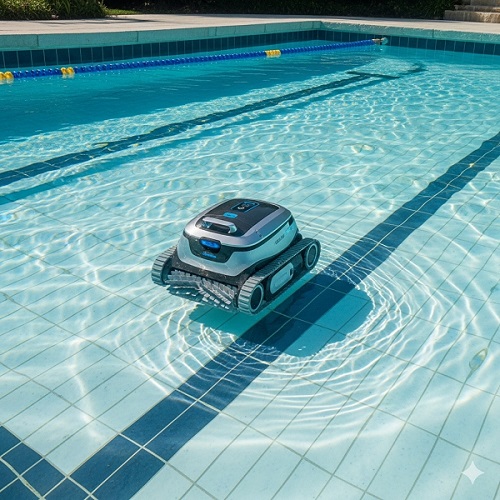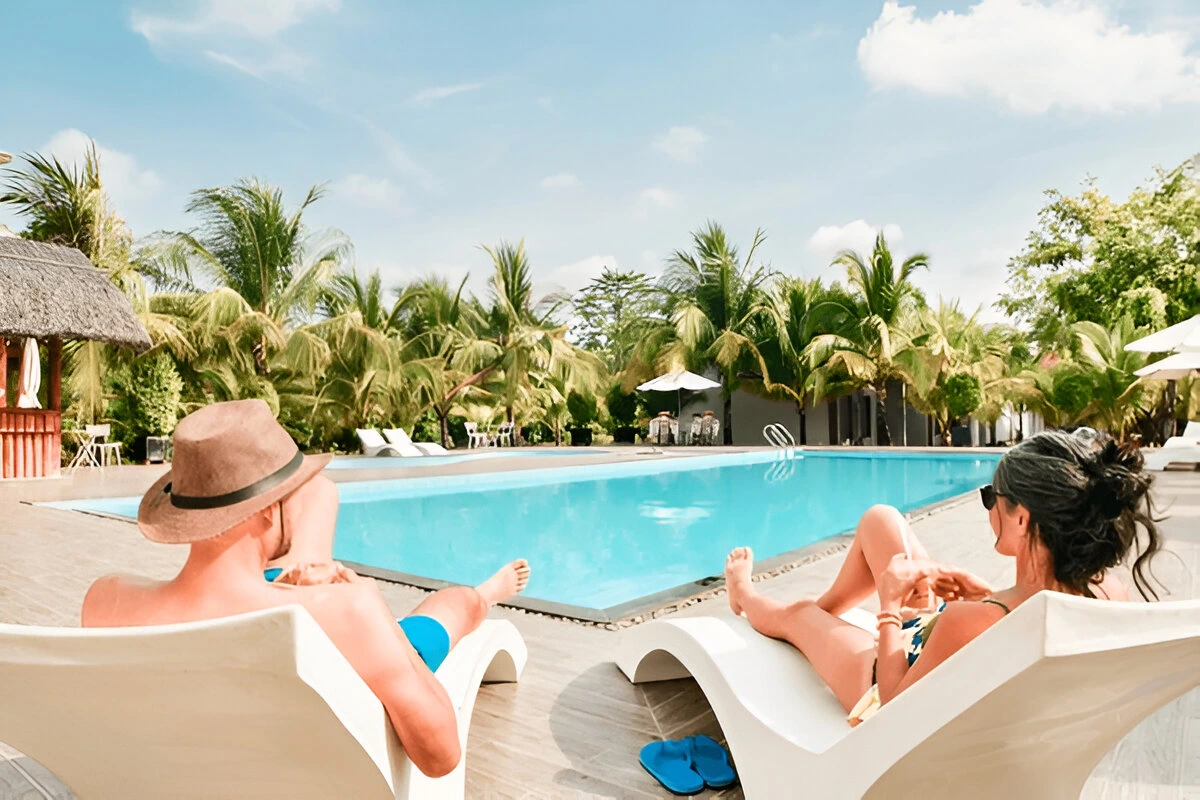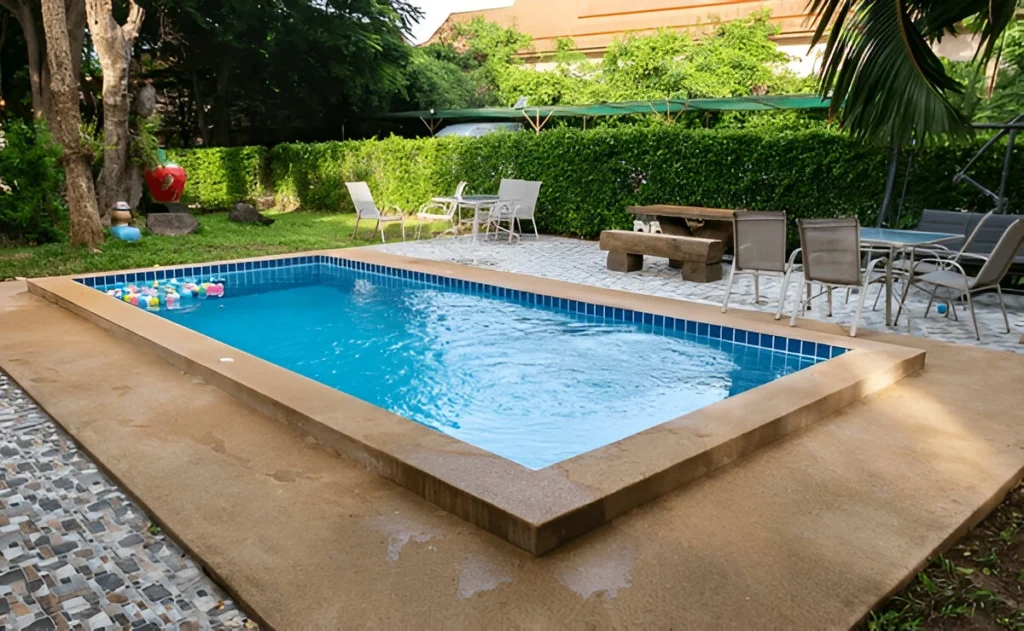
Automatic Pool Vacuum : Advantages & Tips for Buying
If you own a pool, you know how much work goes into keeping it clean. Traditional methods like using a

Building a swimming pool is a dream project for many Australian homeowners. It not only adds value to your property but also offers a place to relax, exercise, and entertain. However, one of the first and most important questions people ask is: how much does a swimming pool cost in Australia?
The answer isn’t simple. The cost of a swimming pool can vary greatly depending on the type of pool, the materials used, the size, location, and the features you want. Whether you’re looking for a small plunge pool or a luxurious inground concrete pool, this guide will help you understand the various factors that impact the cost of a pool in Australia and what you can expect when budgeting.
When planning a pool, it’s essential to know the average price range. On the low end, a basic above-ground pool can cost as little as $3,000. These are often pre-fabricated and suitable for DIY installation. If you’re considering a more permanent and stylish option, inground pools start from about $25,000 and can go up to $100,000 or more, depending on the design and materials.
Fiberglass pools usually fall in the $25,000 to $50,000 range, offering quick installation and durability. Concrete pools, known for their design flexibility and strength, are more expensive and can cost between $35,000 and $100,000+. For those with limited space, the cost of a small pool like a plunge pool generally ranges from $15,000 to $35,000.

If you’re short on space or have a limited budget, a small pool is a smart option. A plunge pool, for example, is a compact pool that can still offer all the luxury of a larger model. The cost of a small pool depends on its construction type, design, and features.
Even though it’s smaller, the installation process may still include excavation, plumbing, fencing, and finishing touches. With fewer materials and faster build time, small pools are more affordable to install and maintain. They’re also energy-efficient and quicker to heat, saving on long-term energy bills.
When asking how much will a pool cost, it’s important to consider all the factors that influence the price. Here are the most common ones:
The type of pool you choose has the biggest impact on the total price. Above-ground pools are the cheapest and easiest to install. Fiberglass pools are a mid-range option, popular for their durability and easy maintenance. Concrete pools are fully customizable but also the most expensive and time-consuming to build.
Naturally, larger and deeper pools require more materials, labor, and time, which increases the cost. A longer lap pool or one with a deep diving area will cost significantly more than a shallow, small plunge pool.
The location of your home and the condition of the site can impact pricing. Sloped blocks, rocky ground, or poor access for machinery can all make the construction process more complex and expensive.
Inground pools require excavation, underground plumbing, steel reinforcement, and concrete or fiberglass shell installation. These construction elements affect both time and cost. A typical pool installation can take anywhere from a few weeks to a few months, depending on the complexity.
Concrete is the most expensive pool material due to its flexibility and durability. Fiberglass is more affordable and faster to install. Vinyl liners are cheaper but less common in Australia due to their shorter lifespan.
While the initial cost is important, you should also consider long-term costs involved in owning a pool.
To keep your pool clean and safe, regular maintenance is required. You’ll need pool chemicals, filters, and possibly a pool vacuum cleaner or robotic cleaner. These pool cleaning tools can range from a few hundred to a couple of thousand dollars. Ongoing servicing, water testing, and cleaning may cost between $1,000 and $2,000 annually.
Filling your pool can cost a few hundred dollars depending on its size. Running filtration systems, pumps, and heaters also adds to your electricity bill. Using energy-efficient systems can reduce these costs over time.
Installing a pool heater can cost anywhere from $2,000 to $5,000 depending on the type. Solar heating is popular and more economical in the long term. LED lighting can add beauty and functionality to your pool but may cost an additional $500 to $2,500 during installation.
In Australia, pool fencing is legally required. The cost depends on the size of your pool and the type of material you use, but on average, fencing can add another $2,000 to $5,000 to the total swimming pool cost.
If you’re looking to enhance your swimming experience, additional features will add to the overall cost:
1. Water features such as fountains or waterfalls
2. Integrated spas or hot tubs
3. Saltwater chlorination systems
4. Smart pool automation and controls
5. Stylish finishes like mosaic tiles or stone coping
6. Landscaping and poolside decking
Each of these extras can increase your budget by several thousand dollars, so it’s important to plan accordingly and prioritize what’s most important for your family.
Before construction begins, you’ll need to get the necessary permits and approvals from your local council. These may include:
1. Planning approval
2. Building permits
3. Safety inspections
The total cost of permits and council fees may range from $300 to $1,000, depending on your local area and the scope of your project. Always ensure your pool builder is familiar with local requirements to avoid legal or safety issues.
Building a pool is a major investment, but there are smart ways to reduce costs:
1. Choose a smaller size or a plunge pool
2. Opt for fiberglass instead of concrete
3. Limit custom features to essentials
4. Install during the off-peak season (winter)
5. Compare quotes from multiple contractors
6. Do your own landscaping after construction
It’s also worth investing in durable pool cleaning tools early on, which can save on future maintenance costs and help keep your pool in great condition.
The time required to build a pool depends on the type and complexity. A fiberglass pool might take just 2 to 4 weeks from start to finish, while a concrete pool could take up to 3 months or more. Weather conditions, permit delays, and design changes can also impact the schedule.
So, how much does a swimming pool cost in Australia? The short answer is: it depends on what you want. You could spend as little as $3,000 on a basic above-ground pool or more than $100,000 on a luxurious, fully customized concrete pool. The final price is influenced by the type of pool, materials used, size, site conditions, features, and ongoing maintenance.
By understanding the components of swimming pools cost, you can plan better, set a realistic budget, and create a beautiful backyard retreat that fits your lifestyle. Whether you’re dreaming of a compact plunge pool or a grand family pool with all the features, careful planning and the right builder can turn your vision into reality.
Above-ground pools are the most affordable, often costing between $3,000 and $10,000, and are ideal for quick installations.
A concrete pool typically costs between $35,000 and $100,000, depending on its size, shape, and finish.
Annual maintenance including cleaning, chemicals, and servicing generally ranges from $1,000 to $2,500.
Depending on the type and complexity, pool installation can take from 2 weeks to over 3 months.
Yes. Investing in reliable pool cleaning tools such as robotic pool cleaners or suction vacuums can save time, improve hygiene, and reduce ongoing maintenance costs.

If you own a pool, you know how much work goes into keeping it clean. Traditional methods like using a

Keeping a pool clean is not easy for many people. It takes time to scrub the floor, clear the walls,
